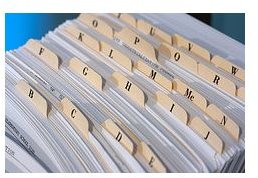Being a Team Leader as Part of Your Special Education Teacher Job Description
Your Special Education Team
A special education teacher job description is long and complex. One of your tasks is to be a team leader. You are most familiar with
your students’ IEPs (Individual Education Plans). Many of your students will have paraprofessionals assigned to them, spend time in the regular classroom setting, attend speech and language classes, and even have outside therapists or counselors. You are the one faculty member in the school who knows the most about your special education student, his/her needs, and his/her goals as part of your special education teacher job description.
But you cannot do everything for this one student on your own because you have other students and responsibilities at your school. Think of the student, regular classroom teacher, school counselor, special area teachers, paraprofessionals, parents, and any outside therapists as a team. You are all part of the same team with a common goal–to help a student receive the best education possible. But someone has to be the team leader, or coach, in order for the team to succeed, stay organized, and communicate with one another. That team leader is you–the special education teacher.
Staying Organized

A big part of the job description for a special education teacher is staying organized with all the paperwork and files you will have. This is extremely true if your student has several teachers on his team. Sometimes, it is difficult to stay organized. The student may have trouble remembering his schedule. Paraprofessionals and regular classroom teachers may not know everything a student has to do in one day. Here are a few ways as team leader, you can keep your special education team organized and delegate tasks:
-
Assign one paraprofessional to keep track of a student’s schedule if he is not able to do so himself. If you have 15 students on your caseload and 3 paraprofessionals, then assign five students to each paraprofessional and ask them to keep your students on schedule. You can also ask the paras to create a system to remind students when they need to go another class.
-
Give each team member a copy of the students’ schedules. This is part of your special education teacher job description. For example, if a student forgets to go to speech, then the speech and language teacher can look at the student’s schedule and find him.
-
Color code your folders and information for each student. You can find different color file folders at most office supply stores or on-line. Assign one color to each of your students. Give the student two folders–one to keep in your classroom and one to send with him to all his classes for paperwork. Make sure each member of your team knows about his colored folder. You will make fewer mistakes in filing papers in the wrong folder with a color-coded system.
Communication in the Team
Special education teachers do a lot of co-teaching in special education. With this co-teaching, there needs to be plenty of communication in an organized fashion.
Your most important job as a team leader is to make sure that your special education team is communicating every day and not just when it comes time for report cards or parent teacher conferences. As busy teachers who are co-teaching in special education, you do not have time to talk every day, but you can use the following ways to quickly communicate your students’ progress:
-
Checklists are one of the easiest communication tools. Create a checklist with your students’ goals, and ask other teachers to fill it out each time they see the student. When the student returns to your room, delegate the paraprofessional to look over the checklists and let you know if there are any concerns or accomplishments. The checklists can be kept in your students’ colored folders.
-
Use large address labels to record observations about your students when they are in your classroom or any thoughts you are having that you want other teachers or even special education teachers to know. When you are finished observing a student, peel the label off and stick it in his main folder if the observations were for you or in his class folder if they were for other teachers. Make sure as team leader, you let teachers know to check for labels with notes before they teach your student each day.
-
Email is fast and efficient, but you have to check it! If you are going to use email to communicate with your special education team and effectively do co-teaching in special education, then you need to let them know to check their email throughout the day for any notes from you. The same is true for you. The teachers on your team may communicate with you through email, so make sure you check it often or at least morning, lunch, and after school.
